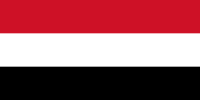Popular Front for the Liberation of the Occupied Arabian Gulf facts for kids
Quick facts for kids Popular Front for the Liberation of the Occupied Arabian Gulf |
|
|---|---|
| الجبهة الشعبية لتحرير الخليج العربي المحتل | |
 |
|
| Dates of operation | 1968–1974 |
| Active regions | Dhofar Governorate, Oman |
| Ideology | A form of communism Arab nationalism Scientific socialism Feminism |
| Political position | Left-wing |
| Allies | |
| Opponents | |
|
|
|
The Popular Front for the Liberation of the Occupied Arabian Gulf (PFLOAG) was a revolutionary group that was active in the Arabian Peninsula. The group used ideas from Marxism and Arab nationalism, which is the belief that Arab countries should be united. Their main goal was to remove the kings and sultans who ruled the countries in the area.
The PFLOAG is best known for its role in the Dhofar Rebellion, a war fought against the ruler of the Sultanate of Oman. The group later changed its name to the Popular Front for the Liberation of Oman and the Arabian Gulf.
Contents
History of the Group
The PFLOAG was formed in 1968. It grew out of an earlier group called the Dhofar Liberation Front. The PFLOAG wanted to create a new Arab state in the Gulf region based on socialism, where the government would have more control over the economy to create a fairer society.
What Were Their Goals?
The PFLOAG had several key goals for the region:
- Remove foreign power: They wanted to force the British military to leave Oman.
- Create a new government: They planned to write a constitution, end military rule, and allow freedom of speech.
- Economic changes: The group wanted to put the oil companies under government control, build new industries, and give land to the people who worked on it.
- Social justice: They fought for fairness and supported other groups in Asia, Africa, and Latin America who were also fighting for freedom.
The group also supported the struggle of the Palestinian people.
The War in Dhofar
The PFLOAG had a close relationship with the government of South Yemen, which gave them support. With this help, PFLOAG fighters, known as guerrillas, took control of large areas in western Dhofar. In August 1969, they captured the town of Rakhyut.
For a time, China also supported the group. However, China stopped its support in 1971 as it tried to build better relationships with other Arab countries.
In 1974, the PFLOAG split into two new groups: the Popular Front for the Liberation of Oman and the Popular Front for the Liberation of Bahrain. Even after the split, the leaders promised to keep fighting against foreign influence in the region.
A Focus on Women's Rights
The PFLOAG was strongly committed to feminism, the belief in equal rights for women. In 1968, the group declared that freeing women was a key part of freeing all of Dhofar.
At the time, women in Dhofar had some freedoms but were still limited. For example, very few women were allowed to travel to get an education. The PFLOAG worked to change this.
How Did They Support Women?
The group took several steps to improve women's lives:
- They created laws against practices that were unfair to women, like a man having more than one wife.
- They opened schools that both boys and girls could attend. Before 1970, it was forbidden for girls to go to school in Oman.
- Women were recruited to join the group's army, allowing them to fight alongside men.
The PFLOAG believed that fighting for women's rights was just as important as fighting the government. They saw that old traditions sometimes held people back, and they wanted to create a more equal society for everyone.
The group's advanced views on women's rights inspired the filmmaker Heiny Srour. In 1974, she made a documentary about the Dhofar War called The Hour of Liberation Has Arrived, which showed the important role women played in the movement.

